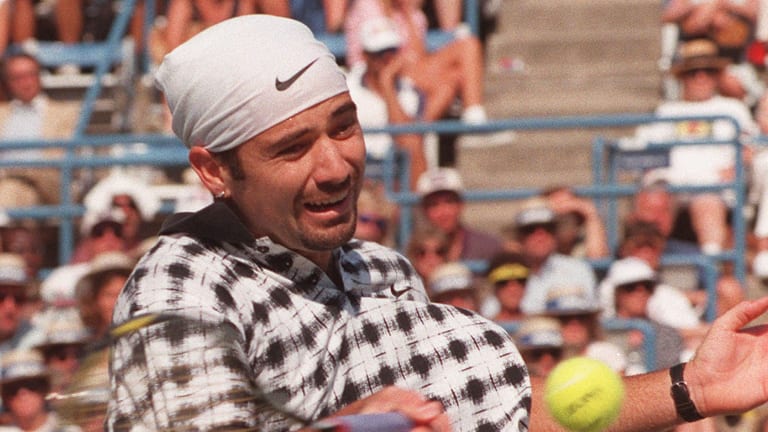On this day: Andre Agassi takes over top spot for first time in 1995
By Apr 10, 2020pickleball
Steffi Graf and Andre Agassi win $1 million at Pickleball Slam 3 over Eugenie Bouchard and Andy Roddick
By Feb 17, 2025Social
Agassi, Roddick, Pegula, Navarro to participate in tennis benefit for Western North Carolina: ‘Stars Servin’ Up Love’
By Jan 31, 2025Australian Open
Will Naomi Osaka find her inner Andre Agassi?
By Jan 11, 2025Laver Cup
Andre Agassi and Yannick Noah herald new era for the Laver Cup
By Sep 24, 2024Baseline in The Big Apple
Andre Agassi, Taylor Fritz, Zheng Qinwen headline Citi Taste of Tennis in New York City
By Aug 23, 2024Social
From McEnroe to Alcaraz, Tennis legends headline Stars of the Open event on Arthur Ashe Stadium
By Aug 22, 2024Baseline in The Big Apple
“Pickleball breaks down cultural barriers”: Andre Agassi says the surging sport is about more than staying active
By Aug 20, 2024Social
Iga Swiatek has 'kinda amazing' meet-up with Andre Agassi and Steffi Graf
By Aug 16, 2024Lifestyle
Andre Agassi, Lindsay Davenport celebrate 125 years of Cincinnati tennis, laud U.S. field
By Aug 11, 2024On this day: Andre Agassi takes over top spot for first time in 1995
The seven-and-a-half-month stretch that led the American from No. 20 to No. 1 saw him win 49 of 54 matches and six of the 11 events he played.
Published Apr 10, 2020
Advertising

On this day: Andre Agassi takes over top spot for first time in 1995
© ASSOCIATED PRESS
Advertising

On this day: Andre Agassi takes over top spot for first time in 1995